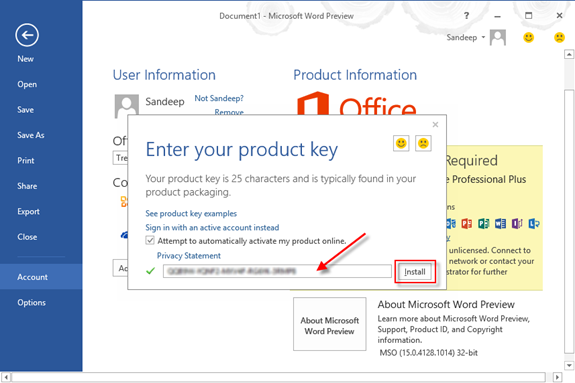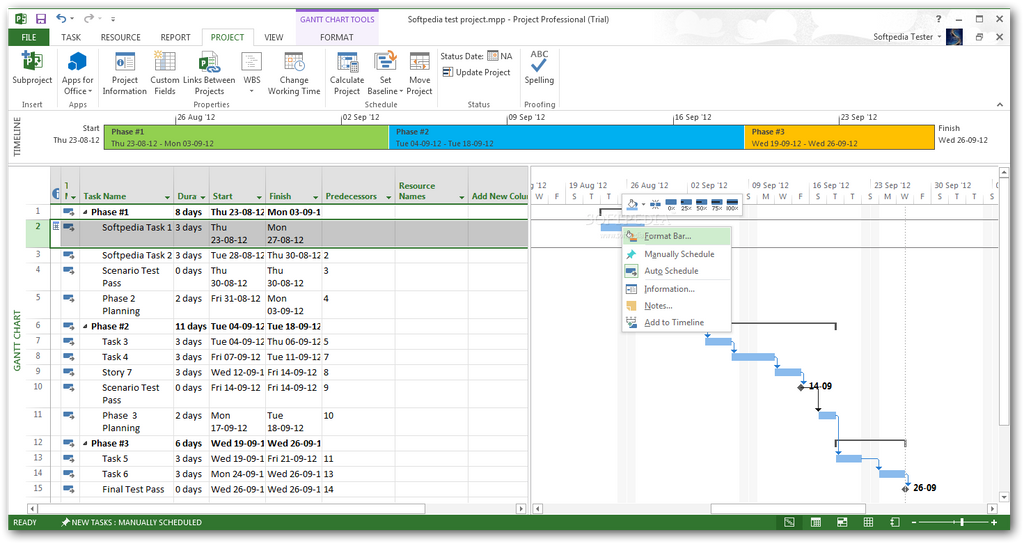

- #INSTALL MICROSOFT PROJECT PROFESSIONAL 2013 INSTALL#
- #INSTALL MICROSOFT PROJECT PROFESSIONAL 2013 UPDATE#
- #INSTALL MICROSOFT PROJECT PROFESSIONAL 2013 FULL#
- #INSTALL MICROSOFT PROJECT PROFESSIONAL 2013 REGISTRATION#
(Printable Duo registration and installation instructions available here.)

Second: Be sure you register for Duo from your laptop or desktop computer.

#INSTALL MICROSOFT PROJECT PROFESSIONAL 2013 INSTALL#
If you use a web browser to access Microsoft 365 apps, you will be prompted for authentication with each new browser session.įirst: Install the Duo app on your preferred device (we highly recommend doing this on your smartphone). You will only be prompted for for authentication about once every 90 days when using the desktop applications. OIT recommends using the Microsoft Office 365 desktop or mobile device applications for access to all these programs.
#INSTALL MICROSOFT PROJECT PROFESSIONAL 2013 FULL#
Troubleshooting: If you are having difficulty with Office 2016, OIT recommends uninstalling Microsoft Office and reinstalling the full office package using Office 2019 and above. If you already have Outlook and Microsoft 365 apps installed, be sure you are using an updated version - either Office 2016, Office 2019 or Office365. If you are experiencing an issue with authenticating, please check that you are using supported devices and operating systems. Multi-Factor Authentication (MFA) and Microsoft 365Īll Microsoft 365 applications - including email - require MFA to provide additional authentication for proof of your identity whether on-campus, off-campus, or your mobile device. Only the name changed there are no changes to the applications. Please note: Microsoft changed the Office 365 brand name to Microsoft 365. Sign-in using your university email address and password. You can access Microsoft 365 applications by logging in at. Offering benefits way beyond programs like Word, Excel, PowerPoint, OneNote, OneDrive, Outlook and more, Microsoft 365 is a suite of productivity, storage, multi-media and business applications that allows you to collaborate and share your work across campus,
#INSTALL MICROSOFT PROJECT PROFESSIONAL 2013 UPDATE#
If you have other PATH and/or GUID that you would like to add to this list, write a comment about it and I’ll update the post.CU Denver Student Computer Labs and Study Spaces In case you also need the installation GUIDs, for example to retrieve some Office-related installation data from Windows Installer and/or Registry Editor, I’m also enumerating those (source: ): Office XP If you never heard of Click-To-Run installation mode, read here. The executable files have kept the same names since Office XP, which are the following:Ĭ : \Program Files \Microsoft Office \Office10 \Ĭ : \Program Files (x86 ) \Microsoft Office \Office10 \Ĭ : \Program Files \Microsoft Office \Office11 \Ĭ : \Program Files (x86 ) \Microsoft Office \Office11 \Ĭ : \Program Files \Microsoft Office \Office12 \Ĭ : \Program Files (x86 ) \Microsoft Office \Office12 \Ĭ : \Program Files \Microsoft Office \Office14 \Ĭ : \Program Files (x86 ) \Microsoft Office \Office14 \Ĭ : \Program Files \Microsoft Office 14 \ClientX64 \Root \Office14 \Ĭ : \Program Files (x86 ) \Microsoft Office 14 \ClientX86 \Root \Office14 \Ĭ : \Program Files \Microsoft Office \Office15 \Ĭ : \Program Files (x86 ) \Microsoft Office \Office15 \Ĭ : \Program Files \Microsoft Office 15 \ClientX64 \Root \Office15 \Ĭ : \Program Files (x86 ) \Microsoft Office 15 \ClientX86 \Root \Office15 \Ĭ : \Program Files \Microsoft Office \Office16 \Ĭ : \Program Files (x86 ) \Microsoft Office \Office16 \Ĭ : \Program Files \Microsoft Office 16 \ClientX64 \Root \Office16 \Ĭ : \Program Files (x86 ) \Microsoft Office 16 \ClientX86 \Root \Office16 \ Hoping to be useful, I’m setting up a public list of all the installation paths of the various versions of Office (from XP to 2016) for all Windows systems.Īll the applications provided by the Office suite ( Word, Excel, Outlook, Access, Powerpoint), if installed, can be found within the given folder(s).


 0 kommentar(er)
0 kommentar(er)
